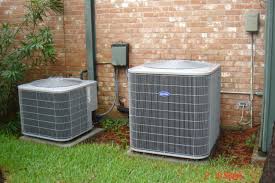Why is the proper hvac system better than a portable air conditioner?

You can learn how to save money with more energy efficient air conditioners or a hvac system. In many parts of the United States, air conditioners aren't just a luxury, but a necessity during the summer months. Many people choose to use a portable air conditioner to cool down a specific part of the house.
Older AC units are not as efficient as some of the air conditioning systems out today. Whether you prefer Carrier, Goodman or Rheem, you will be sure to find an air conditioner in your budget. You can also find air conditioners on sale from many suppliers like Budget Air Supply.
As you look at different pricing factors, you are best served by looking at your budget and finding the best wholesale ac units at the right cost. So how much does it really cost to install a new air conditioning system?
There are so many sizes of air conditioners and hvac system. It is critical to find the right size for your situation. You don't want one without sufficient power to cool your home, and getting an air conditioner that's too big can be more expensive and less comfortable. A/C units are measured in tons, which refers to the amount of heat they can remove from a home in one hour.
A one-ton unit, for example, can remove 12,000 British thermal units (BTUs), while a three-ton system will remove 36,000. The larger your house, the more cooling power you'll need: A 1,600-square-foot house, for example, might be well served by a two-and-a-half-ton unit.
However, there are some other variables to factor in when looking for air conditioners for sale. Like which size will work best in your house or home. Basements are normally cooler than other parts of a home. First or second floors are generally a bit warmer. "You cannot calculate the size and tonnage by square foot alone," says Butch J., owner of Budget Air Supply in Davenport, Florida.
The next thing for you to do is call Budget Air Supply so that we can find a contractor near your home. While it's possible to purchase an air conditioner from a wholesaler or find air conditioners on sale and install it yourself, the level of skill required is substantial. Also, you must be certified by the Environmental Protection Agency to handle refrigerant.
For homes that have never had central air, an installation requires new breakers in your electrical panel, wires run through your foundation, new duct work linking to your existing HVAC system and the mounting of your unit on metal brackets or a concrete pad.
You'll want to ensure a crucial task like this is done correctly, so avoid wasting time (and potential injuries) and ask a reputable hvac system professional for a free quote. For a basic, two-ton model, expect to pay $3,000, a mid range unit will run approximately $5,000, and top-of-the-line A/C systems can creep up over $10,000. You can also find wholesale air conditioning prices on our ebay store. Often, the best air conditioners on sale can be found at Budget Air Supply. Call them at 855-473-6484 to discover the best AC specials.
Angie’s List members who had new air conditioners installed in 2014 reported paying an average of $5,230, with a general range of $4,425 to $6,025, not counting discounts many service providers offer to Angie’s List members. If price is a major concern, you may just decide to buy a portable air conditioner from your local “big box” store. Those can be purchased for a few hundred dollars and generally mount in your window.
There are often tax credits for new A/C units to offset the cost of air conditioners, it's possible to find rebates or tax breaks from federal or state agencies.
Unfortunately, federal tax credits expired for residential systems that are Energy Star-rated and aren't part of a new home build. You can check the Energy Star website for current tax credit information. State governments may offer rebates if you install a particularly high-efficiency system, but they are often limited in duration, so it's worth checking around before you hire a professional air conditioning company.
In addition, air conditioning manufacturers are phasing out the hyrdochlorofluorocarbon (HCFC) known as R-22, which is an ozone-destroying greenhouse gas. As of 2015, R-22 production has been reduced by 90 percent. Under current regulations, manufacturers may no longer produce and companies may no longer install new A/C units that contain R-22. The only thing still allowed is that companies can still manufacture new parts, such as condensers with R-22, for replacement in existing units.
Thanks for allowing us to share information on this topic. If you have any questions, give us a call at 855-473-6484 or go to www.BudgetAirSupply.com. Our experts are standing by to answer all of your questions about air conditioners.
Recent Posts
-
Goodman R-32 Horizontal/Upflow Gas Split System
Understanding the Matchup Options The Goodman R-32 2.5 Ton 80% AFUE Horizontal/Upflow Gas Split Syst …30th Nov 2025 -
R-32 Refrigerant: What It Is & When to Replace It
As the HVAC industry moves toward more efficient and environmentally friendly solutions, you might b …23rd Nov 2025 -
MrCool DIY 18k BTU 22 SEER Single-Zone Mini-Split
MrCool DIY 18k BTU 22 SEER Single-Zone Mini-Split If you're looking for a highly efficient way to he …16th Nov 2025



